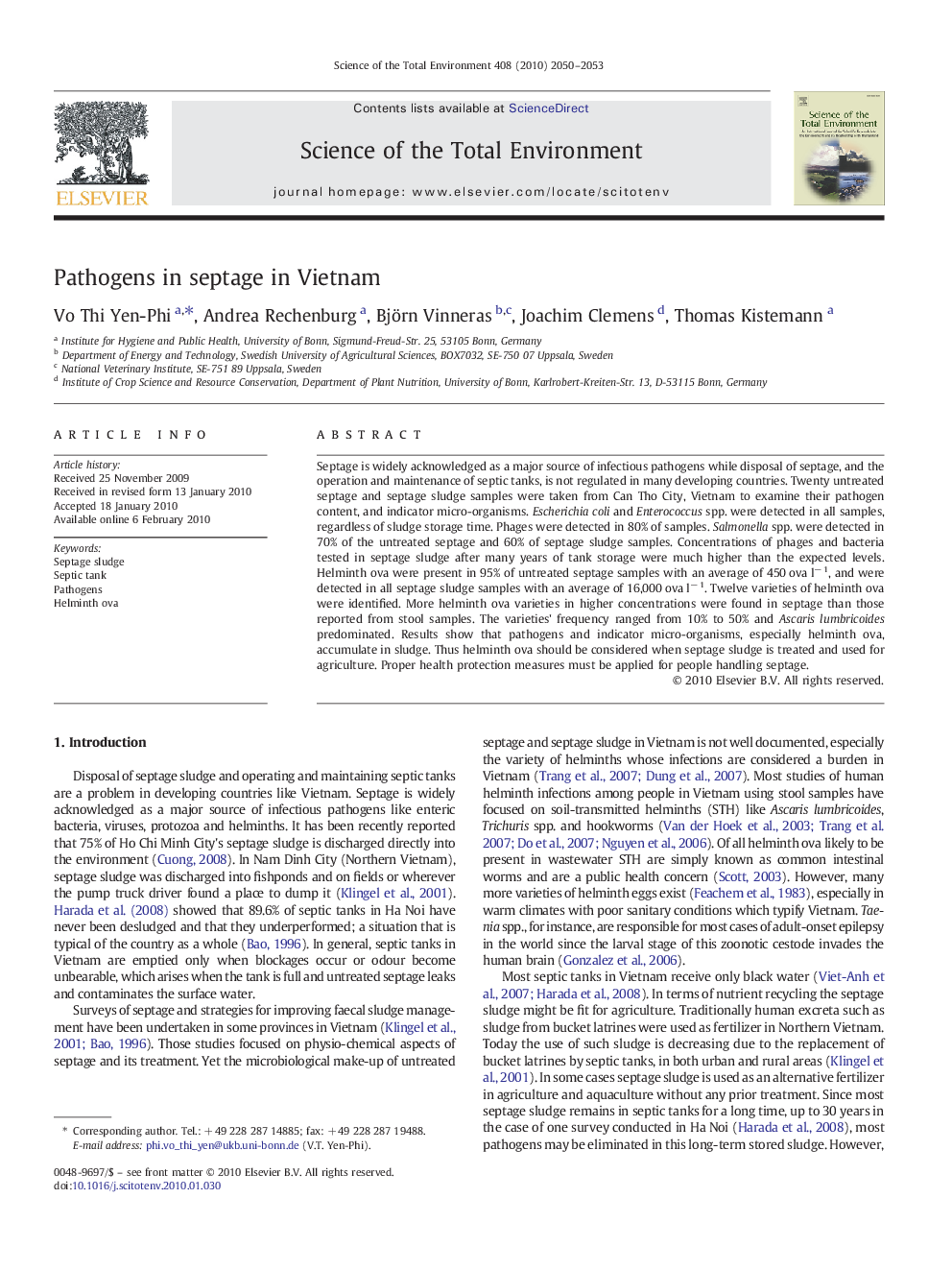| Article ID | Journal | Published Year | Pages | File Type |
|---|---|---|---|---|
| 4431475 | Science of The Total Environment | 2010 | 4 Pages |
Septage is widely acknowledged as a major source of infectious pathogens while disposal of septage, and the operation and maintenance of septic tanks, is not regulated in many developing countries. Twenty untreated septage and septage sludge samples were taken from Can Tho City, Vietnam to examine their pathogen content, and indicator micro-organisms. Escherichia coli and Enterococcus spp. were detected in all samples, regardless of sludge storage time. Phages were detected in 80% of samples. Salmonella spp. were detected in 70% of the untreated septage and 60% of septage sludge samples. Concentrations of phages and bacteria tested in septage sludge after many years of tank storage were much higher than the expected levels. Helminth ova were present in 95% of untreated septage samples with an average of 450 ova l− 1, and were detected in all septage sludge samples with an average of 16,000 ova l− 1. Twelve varieties of helminth ova were identified. More helminth ova varieties in higher concentrations were found in septage than those reported from stool samples. The varieties' frequency ranged from 10% to 50% and Ascaris lumbricoides predominated. Results show that pathogens and indicator micro-organisms, especially helminth ova, accumulate in sludge. Thus helminth ova should be considered when septage sludge is treated and used for agriculture. Proper health protection measures must be applied for people handling septage.
